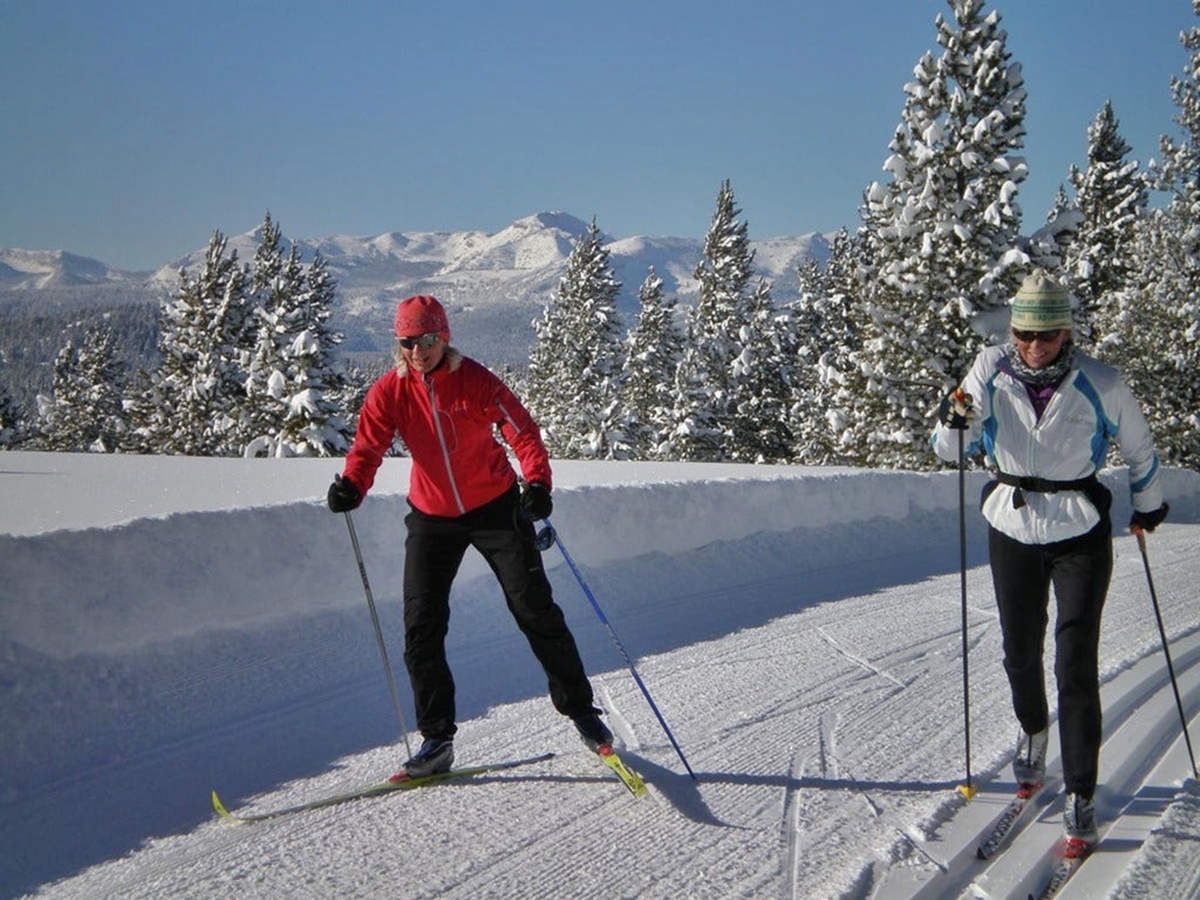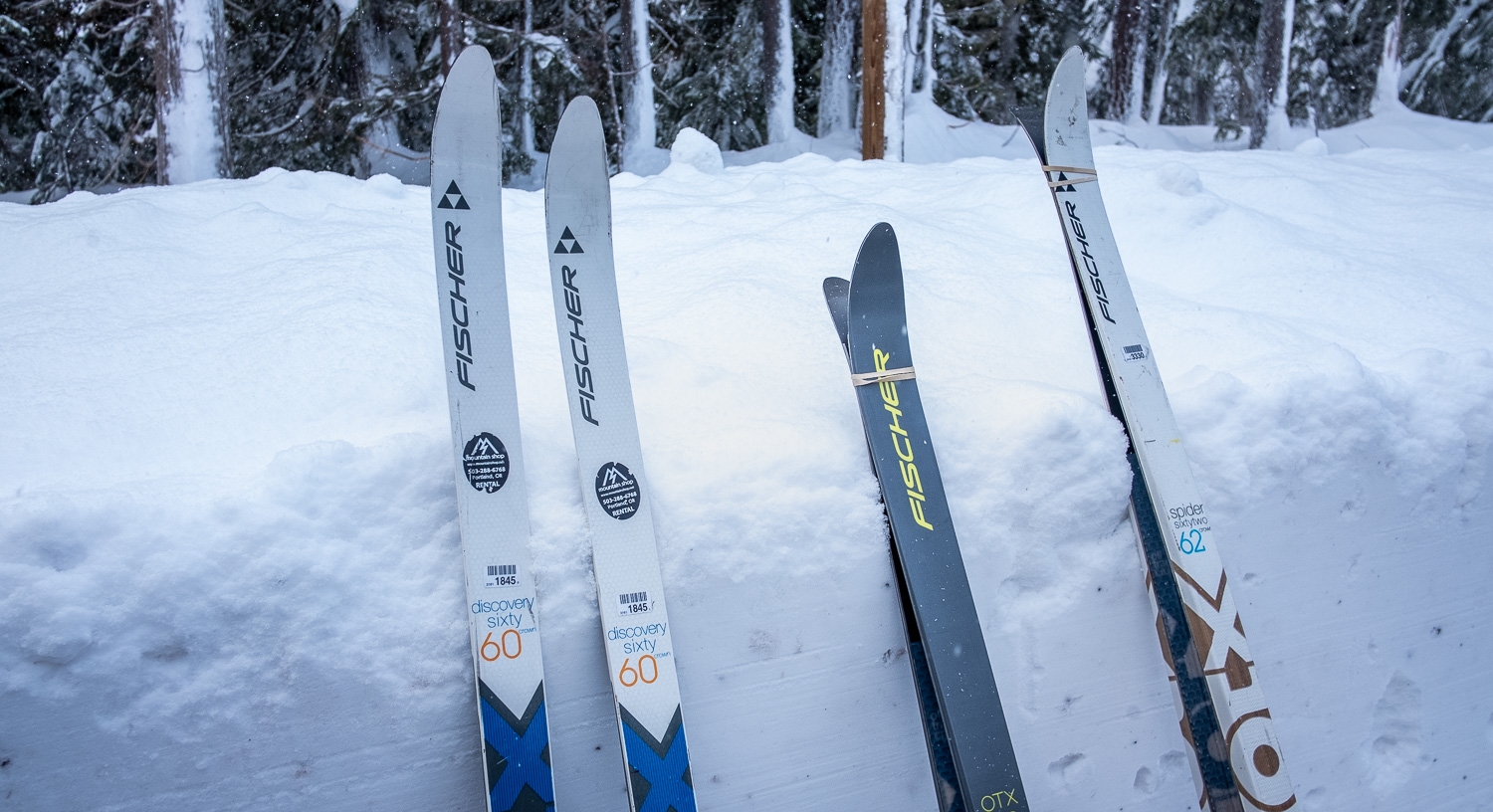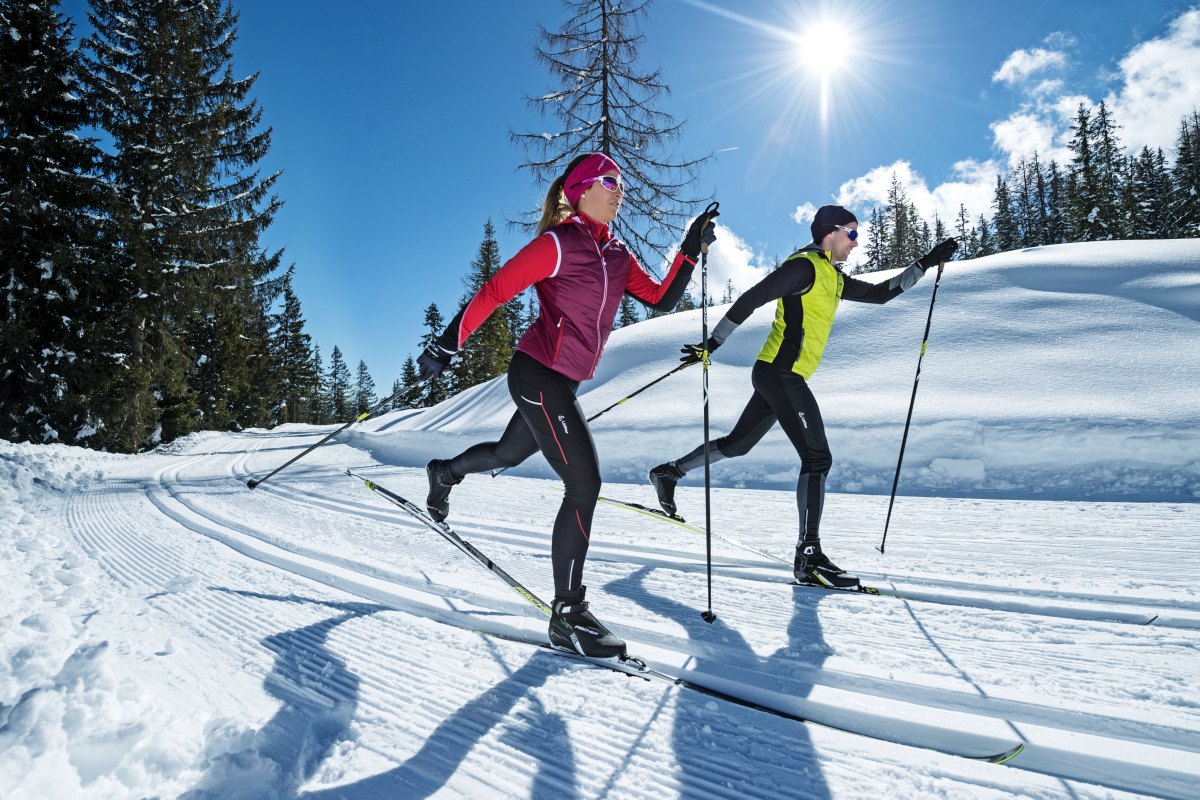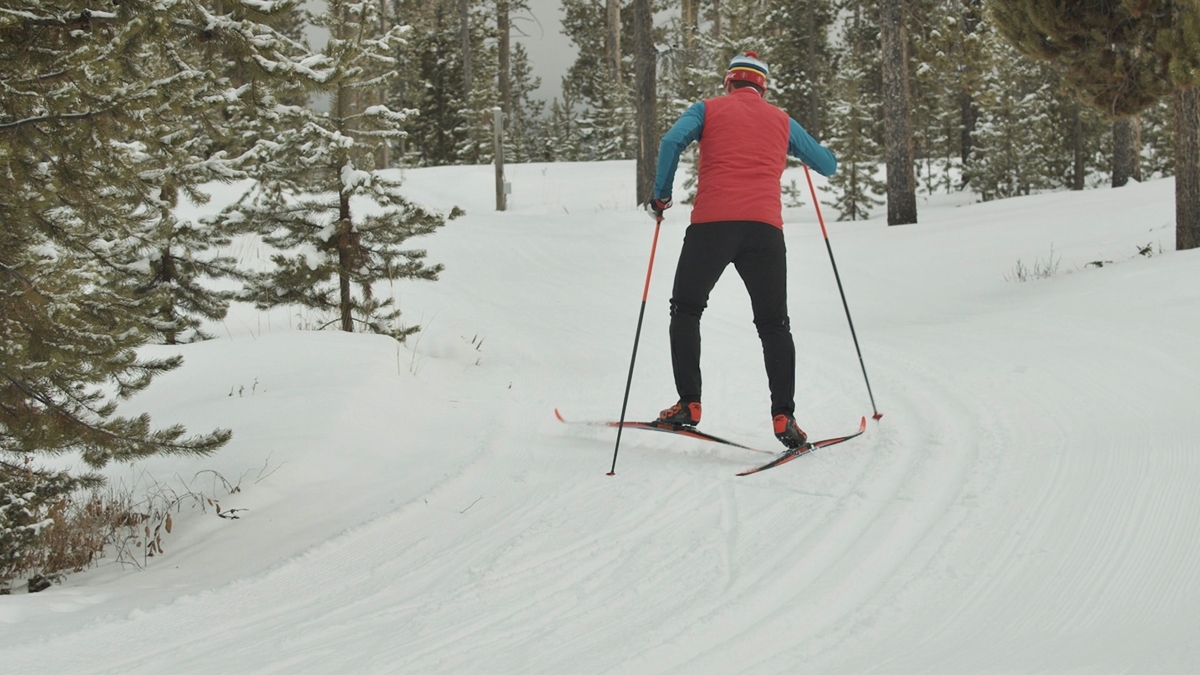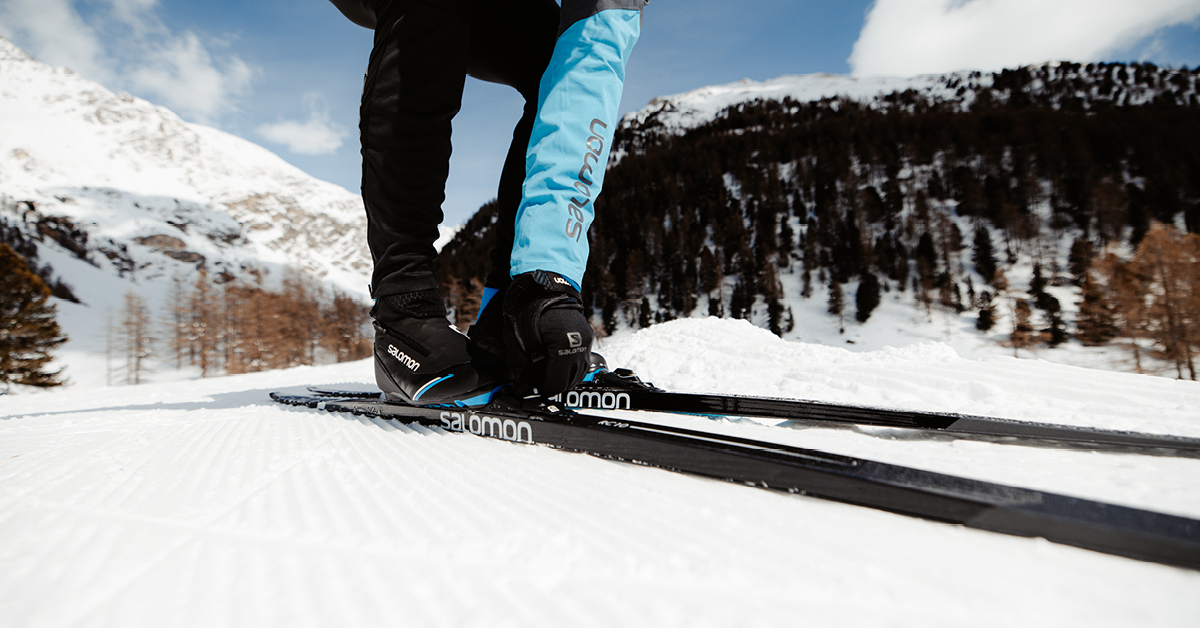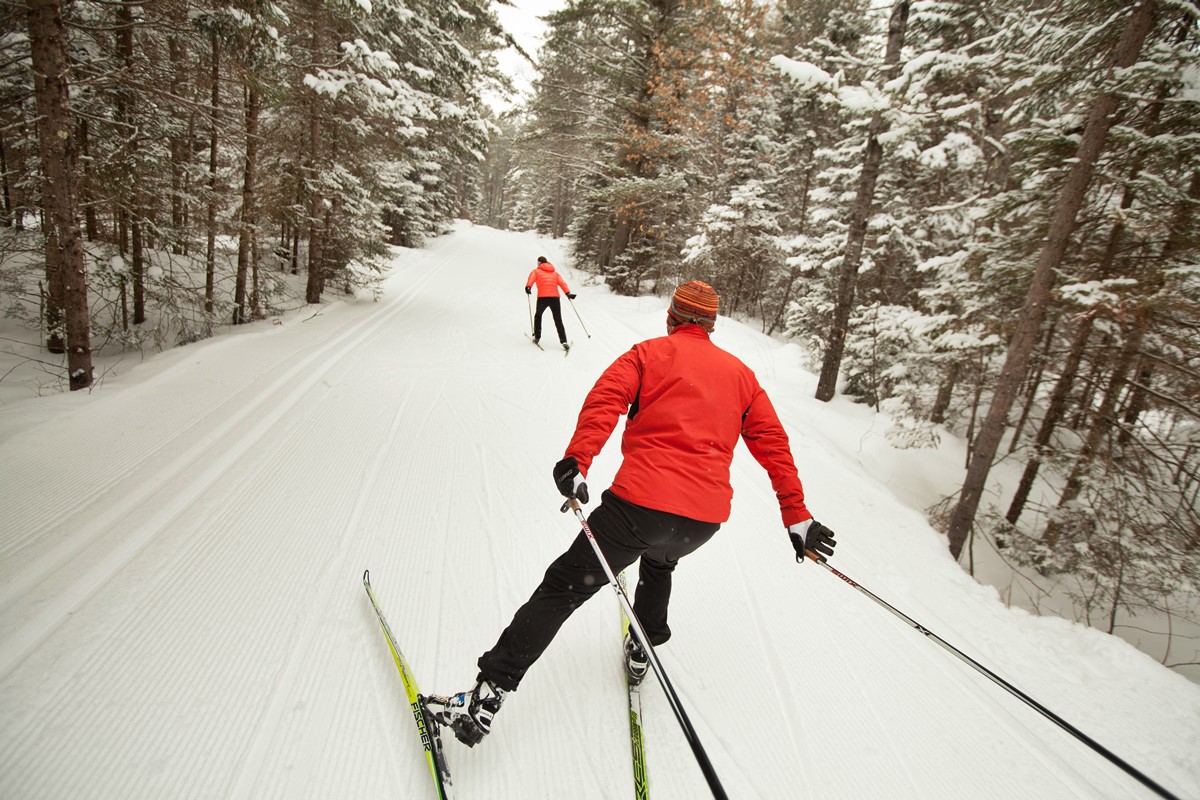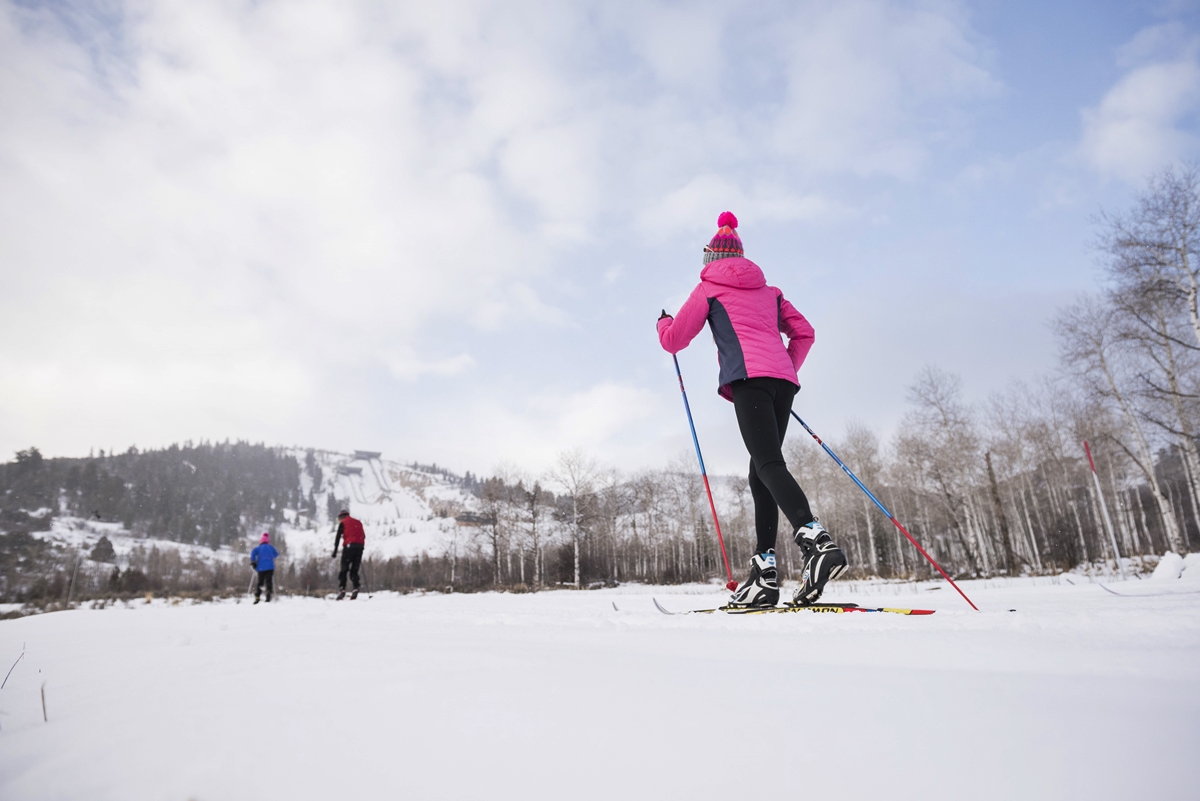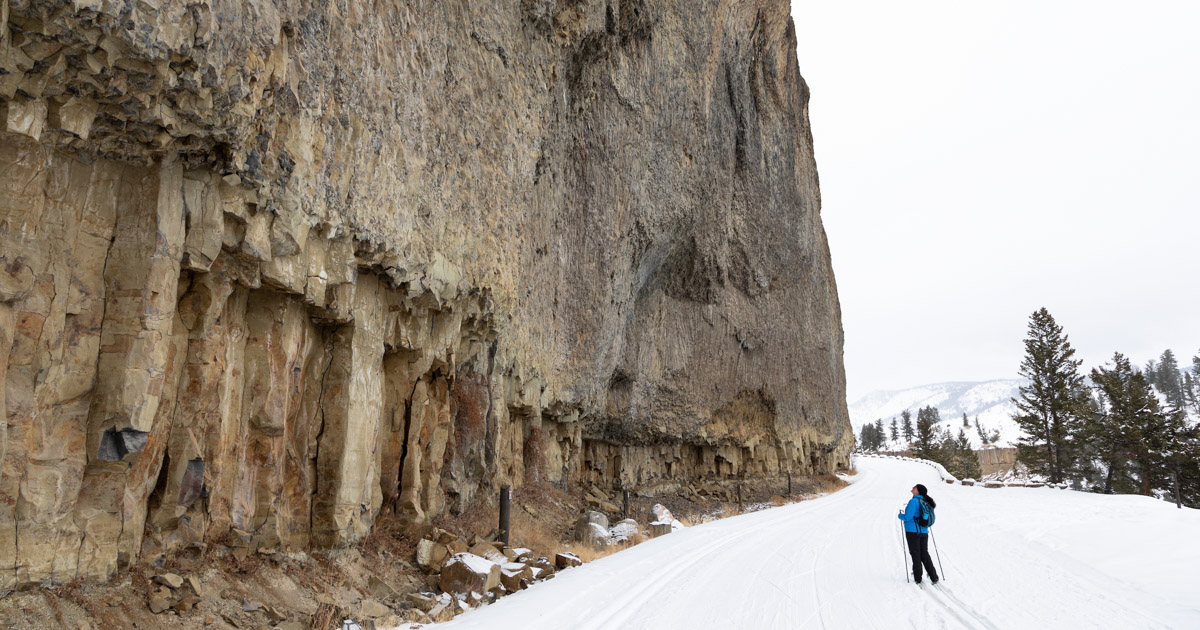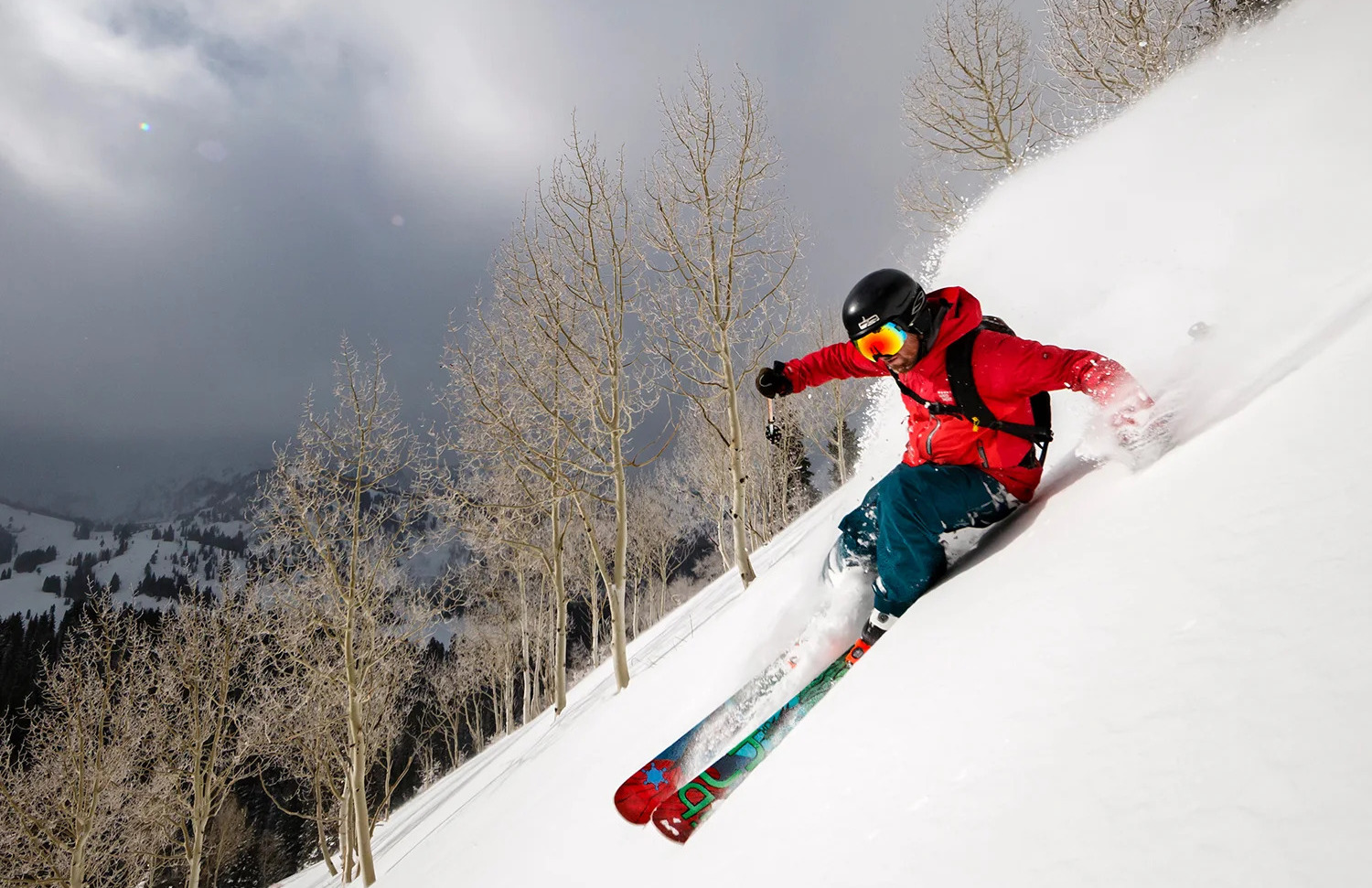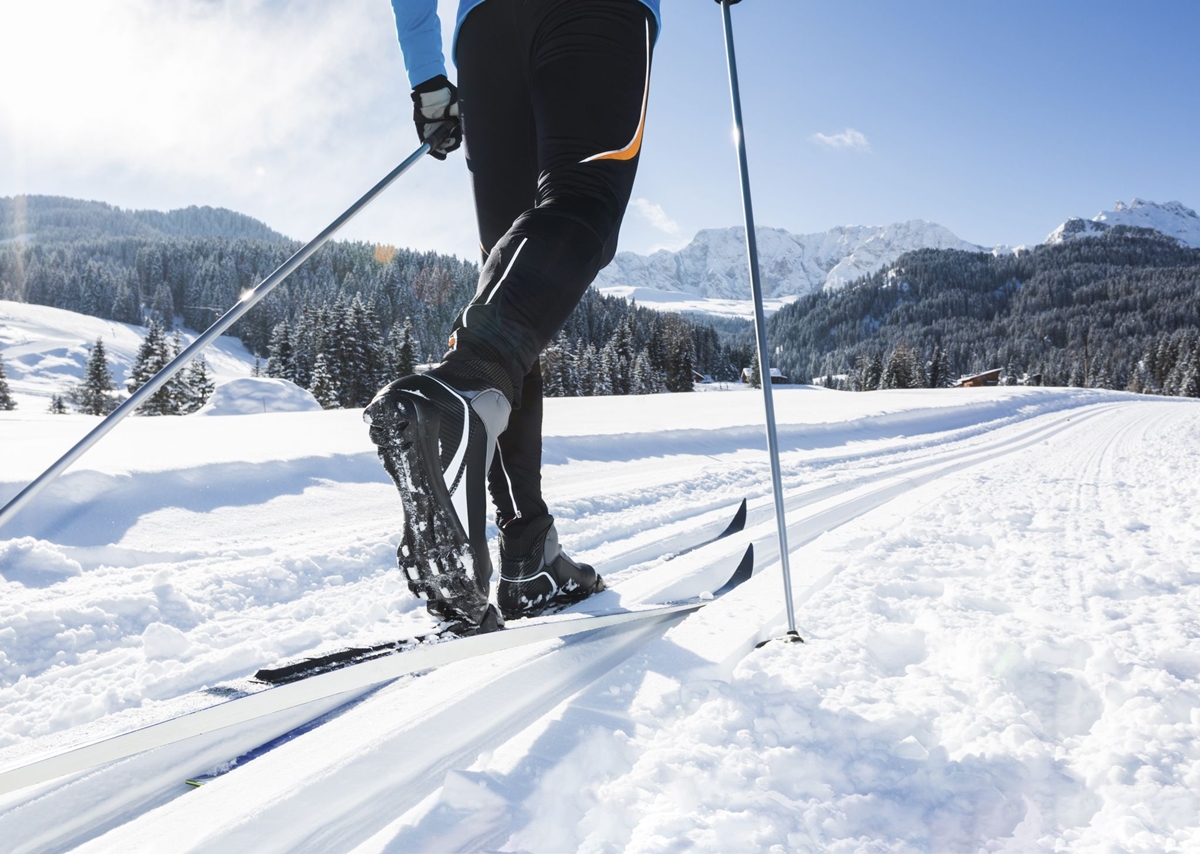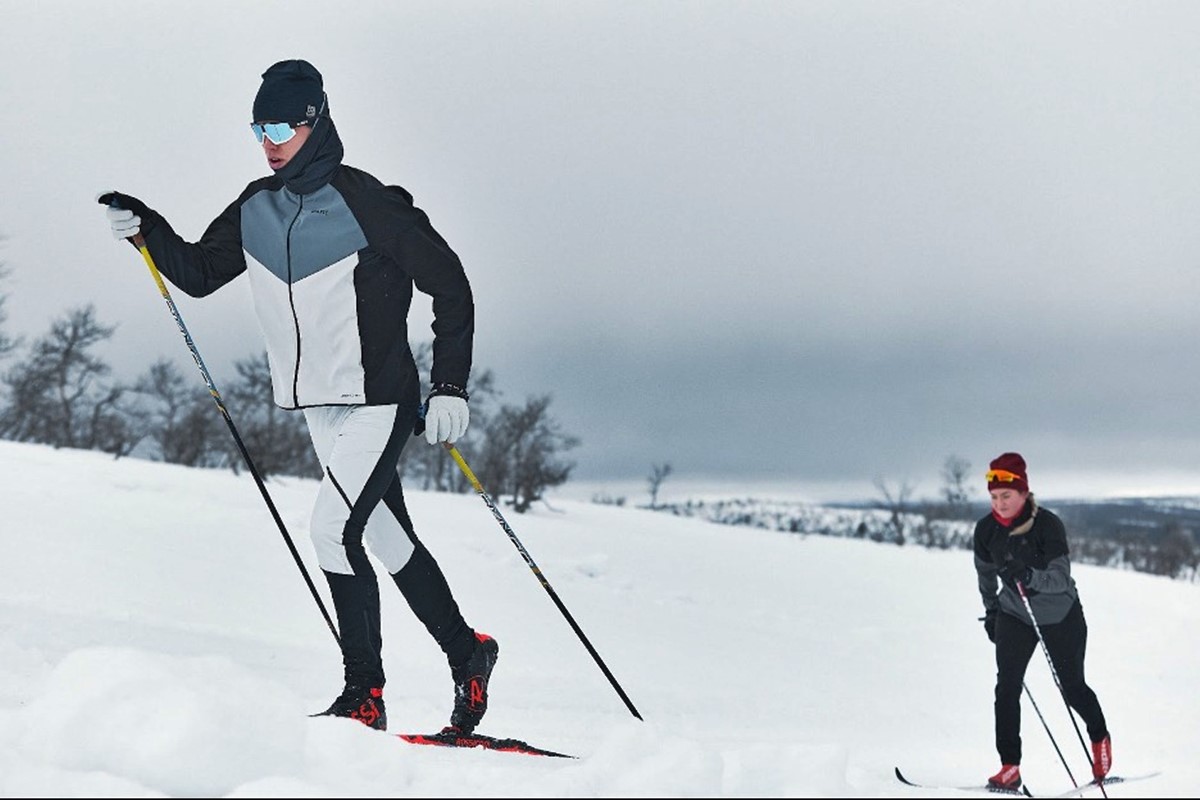

Featured
When Is It Too Cold To Cross Country Ski
Modified: August 18, 2023
Discover when it's too cold for cross country skiing. Find out the optimal conditions for this featured winter sport and stay safe on the trails.
Introduction
When it comes to outdoor winter activities, cross country skiing is a popular choice for adventure enthusiasts and fitness enthusiasts alike. The beauty of gliding through snow-covered landscapes while getting a full-body workout is truly unmatched. However, one question that often arises is: when is it too cold to cross country ski?
While cross country skiing can be enjoyed in a wide range of temperatures, it is essential to understand the factors that affect the experience and safety of skiing in extreme cold. Cold weather can pose unique challenges, such as decreased flexibility, increased risk of frostbite, and reduced energy levels. Therefore, it is crucial to be adequately prepared and knowledgeable to ensure an enjoyable and safe skiing experience.
In this article, we will explore the various factors that impact cross country skiing in cold temperatures, including temperature guidelines, wind chill, appropriate dressing, the importance of proper equipment, safety precautions, and tips for skiing in cold conditions. By understanding these aspects, you will be well-equipped to make informed decisions and fully enjoy the exhilarating experience of cross country skiing, even in chilly weather.
Factors Affecting Cross Country Skiing in Cold Temperatures
When it comes to cross country skiing in cold temperatures, several factors come into play that can significantly impact the overall experience. Understanding these factors is key to planning and preparing for a successful outing. Let’s delve into the primary factors that affect cross country skiing in cold weather:
- Temperature: The obvious factor is the temperature itself. Extremely low temperatures can make skiing uncomfortable and potentially dangerous. Cold temperatures can affect your body’s ability to stay warm, leading to increased risk of hypothermia and frostbite. It’s crucial to check the forecast and avoid skiing during extreme cold snaps.
- Wind Chill: In addition to the temperature, wind chill plays a significant role in determining how it feels outdoors. Wind chill is the perceived decrease in temperature caused by the combination of wind and cold air. Even if the actual temperature is relatively mild, strong winds can make it feel much colder. Monitoring the wind chill factor is important when planning your skiing adventure.
- Humidity: Humidity can also affect the cold weather skiing experience. High humidity can make the cold feel more biting, while low humidity can cause excessive dryness and discomfort. Pay attention to the humidity levels and take appropriate measures to stay protected and comfortable.
- Altitude: Altitude plays a role in cold weather skiing as well. As you climb to higher elevations, the air becomes thinner, resulting in lower temperatures and decreased oxygen levels. These conditions can further intensify the cold and make skiing more challenging. Be mindful of the altitude and adjust your skiing plans accordingly.
- Daylight: The amount of daylight also affects cold weather skiing. Shorter winter days mean fewer hours of daylight, so it’s important to plan your skiing trips accordingly and ensure you have enough time to complete your adventure before darkness sets in.
- Terrain: The type of terrain you’ll be skiing on can impact your experience in cold temperatures. Open, exposed areas are more susceptible to wind chill and can feel colder compared to sheltered or forested trails. Consider the terrain and its potential impact on your skiing experience.
By taking these factors into account, you can better prepare for cold weather cross country skiing and ensure a safe and enjoyable adventure. Next, we will explore the recommended temperature guidelines for cross country skiing to help you plan your outings effectively.
Temperature Guidelines for Cross Country Skiing
When it comes to cross country skiing, understanding the optimal temperature range can help you plan your outings effectively and ensure an enjoyable experience. While personal preferences and tolerance may vary, here are some general temperature guidelines to consider:
- Optimal Temperature: The ideal temperature for cross country skiing typically ranges from around 15°F to 30°F (-9°C to -1°C). In this temperature range, the snow conditions are usually ideal, providing good grip and glide. Skiers can comfortably dress in layers to regulate their body temperature and stay warm.
- Warmer Temperatures: Skiing in temperatures above freezing can result in softer, wetter snow conditions. This can make the snow stickier and slower, requiring more effort to glide. However, it can still be enjoyable if you adapt your technique and dress accordingly.
- Extreme Cold: Extremely cold temperatures below 0°F (-18°C) can pose challenges for cross country skiing. In addition to the discomfort of the cold, your body may struggle to generate enough heat, increasing the risk of hypothermia and frostbite. It is generally recommended to avoid skiing in extreme cold conditions.
It’s important to note that these temperature guidelines are just a starting point. Factors such as wind chill, humidity, and personal tolerance can also affect your skiing experience. Consider the conditions and your comfort level before heading out.
Furthermore, it’s essential to stay updated with the weather forecast and any advisories or warnings in your area. Many ski resorts and trails provide real-time temperature and trail condition updates, allowing you to make informed decisions about your skiing plans. Always prioritize your safety and adjust your plans accordingly.
Now that we understand the temperature guidelines for cross country skiing, let’s explore the concept of wind chill and its impact on your skiing experience.
Understanding Wind Chill and its Impact on Cross Country Skiing
When venturing out for cross country skiing in cold temperatures, it is crucial to understand the concept of wind chill and its impact on your skiing experience. Wind chill refers to the perceived temperature, which takes into account the combined effect of the actual temperature and the wind. The stronger the wind, the colder it feels, even if the temperature itself is relatively mild.
The impact of wind chill on cross country skiing can be significant. Here’s what you need to know:
- Faster Cooling: Wind increases the rate of heat loss from your body, causing you to cool down faster. This can lead to discomfort, increased risk of hypothermia, and reduced energy levels.
- Reduced Visibility: Strong winds can blow snow and create blowing snow conditions, reducing visibility and making it more difficult to navigate. This can affect your overall safety on the trails.
- Increased Risk of Frostbite: Wind chill can accelerate the onset of frostbite. Exposed skin, such as your face, fingers, and toes, is particularly vulnerable. It is crucial to protect yourself by wearing appropriate clothing and gear.
- Additional Physical Effort: Skiing against strong winds requires additional physical effort, as you have to push against the resistance of the wind. This can be tiring and may affect the duration and enjoyment of your skiing experience.
It’s important to monitor the wind chill factor before heading out for your cross country skiing adventure. Many weather sources provide wind chill forecasts and advisories, giving you a better understanding of the conditions you’ll be facing.
To mitigate the effects of wind chill, follow these tips:
- Dress in layers to create a barrier against the wind and insulate your body.
- Wear windproof and insulated outerwear to minimize heat loss.
- Protect exposed skin with appropriate clothing and accessories, such as a face mask, hat, and gloves.
- Choose well-sheltered trails or areas that offer protection from the wind.
- Consider adjusting your skiing plans if the wind chill reaches dangerous levels.
By understanding the impact of wind chill and taking necessary precautions, you can enjoy your cross country skiing experience while minimizing the potential risks associated with cold, windy conditions. Next, let’s discuss the importance of proper dressing for cold weather cross country skiing.
Proper Dressing for Cold Weather Cross Country Skiing
When venturing out for cross country skiing in cold weather, proper dressing is essential to ensure your comfort, safety, and enjoyment on the trails. The right clothing and layers will help regulate your body temperature, protect you from the elements, and allow for ease of movement. Here are some guidelines for dressing appropriately for cold weather cross country skiing:
- Layering: Dressing in multiple layers is key to staying warm and regulating your body temperature. Start with a moisture-wicking base layer to keep sweat away from your skin. Add an insulating mid-layer and a windproof outer layer to protect against wind and moisture.
- Head and Neck: Wear a hat or headband to keep your head warm. Cover your neck with a scarf or neck gaiter. It’s also important to wear ski goggles or sunglasses to protect your eyes from sun glare and wind.
- Hands and Feet: Use insulated, waterproof gloves or mittens to keep your hands warm. Make sure they provide enough dexterity to handle your ski poles. For your feet, wear moisture-wicking socks and choose well-insulated, waterproof ski boots to keep your feet dry and warm.
- Core: Layering is crucial for your core. Start with a moisture-wicking base layer, followed by an insulating mid-layer such as a fleece or down jacket. Finally, wear a windproof and waterproof outer layer to protect against the elements.
- Lower Body: Opt for thermal or moisture-wicking long underwear as a base layer for your legs. Top it off with windproof and water-resistant ski pants for protection against snow and wind.
- Accessories: Don’t forget to have warm, moisture-wicking socks and consider wearing gaiters to keep snow out of your boots. Additionally, hand and foot warmers can provide extra warmth on particularly cold days.
It’s important to note that layering allows you to adjust your clothing as needed, adding or removing layers depending on the temperature and your activity level. This flexibility helps to regulate your body heat and prevent overheating or excessive sweating.
Remember to also pay attention to any specific weather conditions, such as wind chill or precipitation, and adjust your clothing accordingly. Being prepared and properly dressed will make your cross country skiing experience much more enjoyable, allowing you to focus on the beauty of the winter landscape and the rhythm of your skiing stride.
Now that you know how to dress for cold weather cross country skiing, let’s discuss the importance of having the right equipment for your skiing adventures.
Importance of Proper Equipment in Cold Weather Cross Country Skiing
When embarking on your cross country skiing adventures in cold weather, having the right equipment is essential for a safe and enjoyable experience. Proper equipment will not only enhance your performance on the trails but also protect you from the elements. Here are some key factors to consider when it comes to equipment for cold weather cross country skiing:
- Ski Selection: Choosing the right skis is crucial for optimal performance. Cross country skis come in various styles, including classic and skate skiing. Consider your skill level, skiing style, and the type of terrain you will be skiing on to select the appropriate skis.
- Bindings: Bindings connect your boots to the skis. It’s important to ensure that your bindings are compatible with your ski boots, allowing for a secure and stable connection. Properly adjusted bindings will provide better control and power transfer while skiing.
- Poles: Ski poles provide balance, propulsion, and stability while skiing. Choose poles that are of the correct length and material for your skiing style and height. Adjustable poles can be beneficial for adapting to varying terrain and ski techniques.
- Ski Boots: Invest in well-fitting, insulated, and waterproof ski boots. Comfort is key, as ill-fitting boots can lead to discomfort and cold feet. Look for boots with adequate ankle support, good insulation, and a secure latching system to keep your feet warm and secure.
- Wax: Ski wax plays a crucial role in creating optimal glide and traction on the snow. The type of wax used depends on the snow conditions and temperature. Properly waxed skis will help you traverse the terrain smoothly and efficiently.
- Gaiters: Gaiters are fabric coverings that go over your boots and lower legs to prevent snow from entering your boots. They provide an extra layer of protection against the elements and keep your feet dry and warm.
- Safety Equipment: Don’t forget essential safety equipment such as a helmet, especially if you’re skiing in areas with the potential for falls or collisions. Additionally, carry a whistle, a map, a compass, and a first aid kit as precautionary measures.
Having the right equipment not only enhances your overall skiing experience but also contributes to your safety and performance on the trails. Investing in high-quality equipment that is well-suited to your needs and skill level will ensure that you can fully enjoy your cross country skiing adventures, even in cold weather.
Now that we understand the importance of proper equipment, let’s discuss some important safety precautions to consider when cross country skiing in extreme cold.
Safety Precautions for Cross Country Skiing in Extreme Cold
Cross country skiing in extreme cold temperatures can be challenging and potentially dangerous if proper precautions are not taken. It’s essential to prioritize safety to ensure your well-being on the trails. Here are some important safety precautions to consider when skiing in extreme cold:
- Check the Weather: Before heading out, check the weather forecast and be aware of any extreme cold warnings or advisories in your area. If the temperatures are dangerously low, it’s best to postpone your skiing plans.
- Layer Up: Dress in multiple layers to protect yourself from the cold. Be sure to wear a moisture-wicking base layer, an insulating mid-layer, and a windproof outer layer. Proper insulation will help retain body heat and prevent hypothermia.
- Protect Exposed Skin: Cover any exposed skin with warm, windproof accessories such as a face mask, neck gaiter, hat, and gloves. Exposed skin is prone to frostbite in extreme cold conditions.
- Stay Hydrated and Fuel Up: Even in cold temperatures, it’s important to stay hydrated and fuel your body with adequate nutrition. Dehydration and a lack of energy can compromise your ability to stay warm and make sound decisions.
- Know Your Limits: Extreme cold can put extra strain on your body. Recognize your physical limits, and listen to your body. Take breaks when needed, and don’t push yourself too hard in challenging weather conditions.
- Stay on Designated Trails: Stick to well-marked and maintained trails when skiing in extreme cold. Venturing off-trail can be risky and increase your chances of getting lost or encountering dangerous conditions.
- Inform Others: Let someone know about your skiing plans, including the route you intend to take and your expected return time. This way, if anything goes wrong, help can be alerted promptly.
- Carry Safety Equipment: Carry essential safety equipment, including a fully charged cell phone, a map, a compass, and a whistle. These items can be invaluable for navigation and communication in case of emergencies.
- Be Mindful of Frostbite: Frostbite is a serious concern in extreme cold temperatures. Watch for signs of frostbite, such as numbness, tingling, or discoloration of the skin. If you suspect frostbite, seek shelter and medical attention immediately.
- Know the Signs of Hypothermia: Hypothermia can occur when your body loses heat faster than it can produce it. Familiarize yourself with the signs of hypothermia, including shivering, confusion, slurred speech, and exhaustion. If someone is experiencing these symptoms, seek medical help immediately.
Remember, your safety should always be the top priority when participating in cross country skiing, especially in extreme cold conditions. By following these safety precautions and being prepared, you can reduce the risks associated with cold weather skiing and have a more enjoyable and safe experience on the trails.
Lastly, let’s explore some helpful tips to make your cross-country skiing adventures in cold conditions more enjoyable.
Tips for Enjoyable Cross Country Skiing in Cold Conditions
Cross country skiing in cold conditions can be a rewarding and exhilarating experience when approached with the right mindset and preparation. With these tips, you can make the most of your cold weather skiing adventures:
- Warm-up Properly: Before hitting the trails, take the time to warm up your muscles. Start with some light exercises or stretches to prepare your body for the physical demands of skiing in the cold.
- Choose the Right Time: Plan your skiing outings during the warmest part of the day or when the sun is out. This can make a considerable difference in the perceived temperature and overall comfort on the trails.
- Stay Hydrated: Drinking water is just as important in cold weather as it is in warm weather. Stay hydrated to maintain optimal performance and prevent dehydration, which can occur even in colder temperatures.
- Take Breaks: Cold conditions can be physically demanding, so it’s important to take regular breaks to rest, rehydrate, and refuel. Pace yourself and listen to your body’s needs.
- Practice Proper Technique: Focus on using proper skiing technique to maximize efficiency and conserve energy. Take lessons or seek guidance from experienced skiers to improve your skills and make skiing in cold conditions more enjoyable.
- Enjoy the Scenery: One of the unique aspects of cross country skiing is the opportunity to immerse yourself in stunning winter landscapes. Take the time to appreciate the beauty around you and enjoy the serenity of the snowy trails.
- Vary Your Terrain: Challenge yourself and keep things interesting by exploring different trails and terrains. This can add variety to your skiing experiences and keep you engaged and motivated.
- Bring Snacks: Pack energy-boosting snacks to keep you fueled throughout your skiing adventure. High-energy snacks like trail mix, energy bars, or fruit can provide a quick pick-me-up when needed.
- Ski with a Partner: Whenever possible, ski with a partner or a group. Not only is it more enjoyable to ski with company, but it also provides an added layer of safety in case assistance is needed.
- Appreciate the Afterglow: After a satisfying day on the trails, take the time to warm up and enjoy the post-skiing glow. Savor a warm beverage, cozy up by a fire, and reflect on the wonderful experience you’ve had.
By incorporating these tips into your cold weather skiing routine, you can enhance your enjoyment, stay safe, and make the most of your cross country skiing adventures. Remember, the key is to be prepared, listen to your body, and embrace the unique challenges and rewards that come with skiing in cold conditions.
Now that you have a comprehensive understanding of cross country skiing in cold temperatures, it’s time to bundle up, hit the trails, and embrace the magic of winter on your skis.
Conclusion
Cross country skiing in cold temperatures can be a thrilling and invigorating experience, providing a unique opportunity to explore winter landscapes while staying active. However, proper planning and preparation are crucial to ensure a safe and enjoyable outing.
We have covered various factors that can affect cross country skiing in cold temperatures, including temperature guidelines, wind chill, dressing appropriately, the importance of proper equipment, safety precautions, and tips for a more enjoyable experience.
Understanding temperature guidelines helps you determine the best conditions for skiing, allowing you to plan your outings effectively. Being aware of wind chill and its effects on your skiing experience enables you to take the necessary steps to protect yourself from the elements.
Properly dressing for cold weather skiing, with layered clothing and protective accessories, helps you stay warm and comfortable throughout your adventure. Equally important is having the right equipment, from skis and bindings to boots and poles, to enhance your performance and safety on the trails.
Implementing safety precautions, such as checking the weather, staying hydrated, and being mindful of signs of hypothermia and frostbite, ensures that your cold weather skiing experiences are as safe as they are enjoyable.
Finally, incorporating tips like warming up before skiing, selecting the right time, and appreciating the scenery enhances your cold weather skiing adventures, allowing you to make the most of the experience.
So, as you prepare for your next cross country skiing escapade in cold temperatures, remember the importance of being prepared, dressing appropriately, and being mindful of safety. By doing so, you can embrace the beauty of winter and enjoy the exhilarating and memorable moments that come with cross country skiing in cold conditions.
